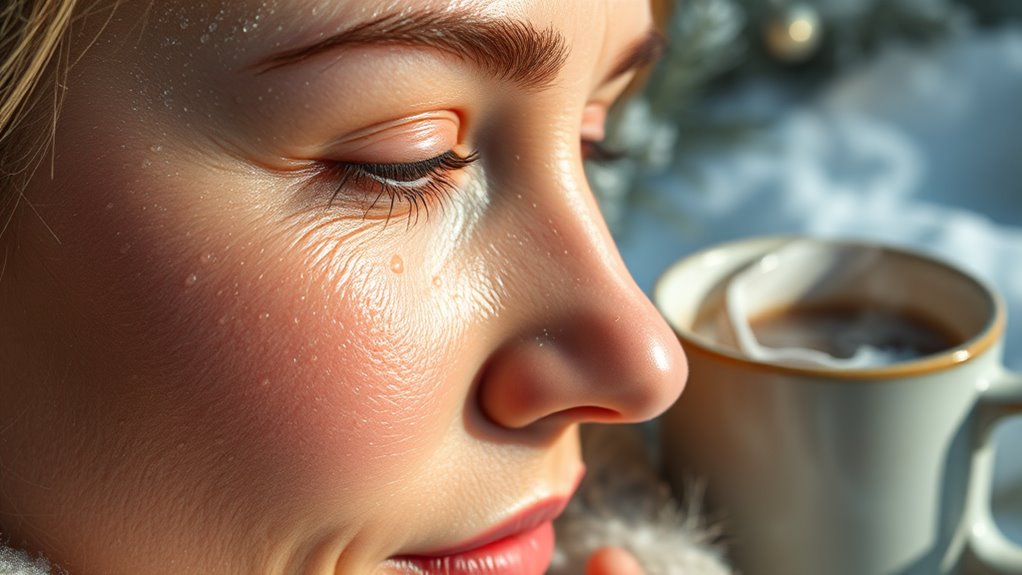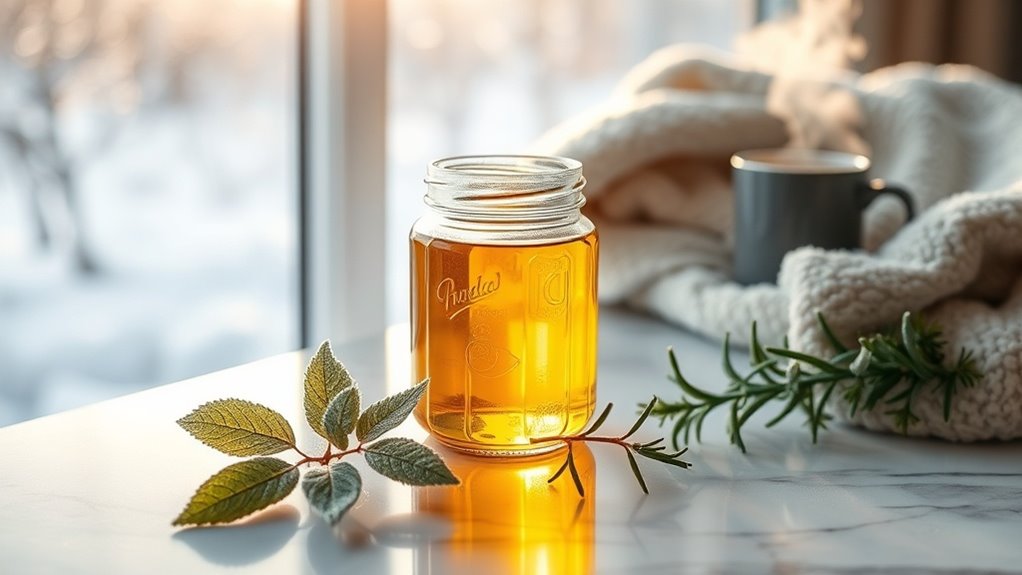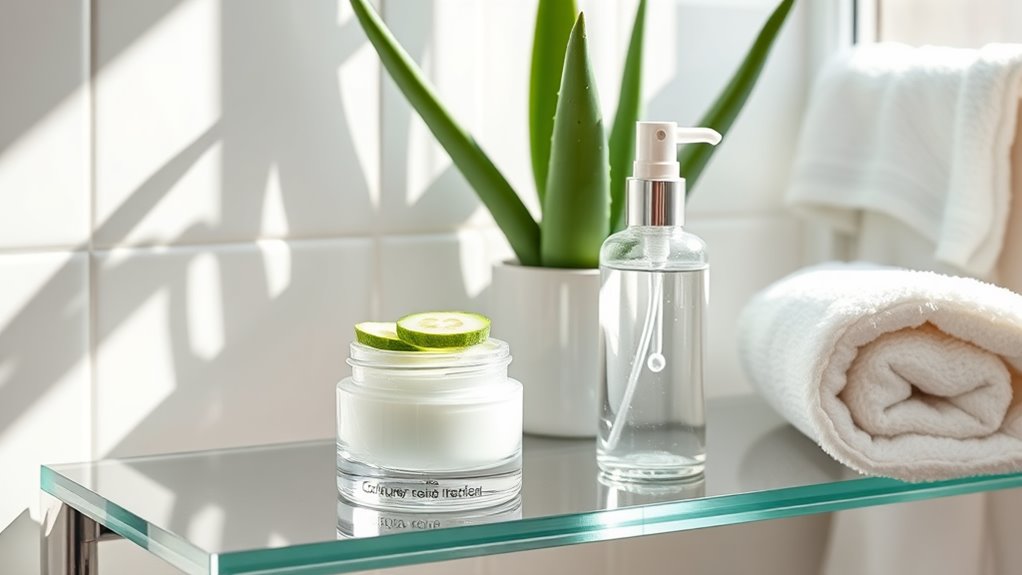Oily Skin in Winter. Here’s Why It Happens and How to Fix It
If you have oily skin, you might think winter is a reprieve from excess oil and breakouts. However, cold weather can actually increase oil production due to the combination of frigid air and indoor heating. This can result in clogged pores and unwanted blemishes. Understanding why this occurs is crucial, as is knowing how to adapt your skincare routine to maintain balance. Let’s explore the factors at play and what you can do to manage your complexion effectively.
Understanding Oily Skin and Its Causes in Winter
Understanding how winter affects oily skin requires examining both the skin’s biology and environmental factors. During this season, you might notice that your skin appears greasier, despite the cold temperatures. Your sebaceous glands, which produce oil, can respond to cold, dry air by ramping up oil production. This can create an imbalance, leading to clogged pores and potential breakouts.
To combat this, consider incorporating winter oily skin tips into your routine. Opt for lightweight, non-comedogenic moisturizers that maintain hydration without adding excess oil. Exfoliation is essential; it removes dead skin cells that may hinder oil drainage. Additionally, you may want to use a gentle cleanser specifically designed for oily skin, safeguarding against fluctuations caused by winter’s harshness. Managing excess grease effectively can help you achieve a balanced complexion throughout the day.
How Cold Weather Affects Your Skin’s Oil Production
When cold weather sets in, your skin can respond by increasing oil production, leading to a paradox where oily skin feels even greasier despite low humidity levels. This occurs because the cold air outside and heated indoor environments strip moisture from your skin. In response, your sebaceous glands work overtime to compensate, producing extra oil. To mitigate this, it’s essential to focus on skin barrier repair, which can aid in maintaining moisture levels and preventing excessive oiliness.
| Factor | Effect on Oil Production | Result |
|---|---|---|
| Cold Air | Decreases moisture | Increased oil production |
| Indoor Heating | Dries skin | Oily skin feels greasier |
| Low Humidity | Signals glands | Overproduction of oil |
| Wind Exposure | Irritates skin | Oil compensates dryness |
| Skin Type | Varies response | Different effects on oil |
Understanding this dynamic can help you manage oily skin effectively during winter.
Common Misconceptions About Oily Skin in Winter
While many people believe that oily skin is less of a concern in winter, this notion can be misleading. In reality, colder temperatures and indoor heating can cause your skin to overcompensate for dryness, leading to increased oil production.
Another common misconception is that oily skin doesn’t need moisturizing; however, depriving your skin of hydration can exacerbate oiliness as it tries to maintain balance.
Additionally, some think that oily skin is solely a summer issue, overlooking that factors like humidity and temperature fluctuations can impact oil levels year-round.
Lastly, individuals often believe that oily skin isn’t prone to acne in winter, but this can lead to clogged pores and breakouts, regardless of the season. Implementing a morning routine tool can help control oily skin effectively, ensuring your skin stays fresh throughout the day.
Understanding these misconceptions is crucial for effective skin care.
Effective Skincare Routine for Oily Skin During Winter
Addressing oily skin in winter requires an effective skincare routine that counteracts the unique challenges this season presents.
Start with a gentle foaming cleanser to remove excess sebum and prepare your skin. Follow up with a lightweight, oil-free moisturizer that hydrates without clogging pores.
Using a toner containing salicylic acid can help balance oil production while minimizing breakouts. Incorporate exfoliation 1-2 times a week to slough off dead skin cells, preventing buildup that can lead to clogged pores.
Lastly, don’t forget sunscreen; choose a non-comedogenic formula to protect your skin from UV rays that can still penetrate through winter clouds. It’s a common myth that oily skin doesn’t need moisturizing products, but proper hydration is essential for maintaining skin balance.
Adhering to this routine can help maintain balance and improve the overall appearance of your skin during colder months.
Recommended Products to Manage Oily Skin in Cold Weather
Choosing the right products is essential for managing oily skin during cold weather. Start with a gentle, foaming cleanser containing salicylic acid to remove excess oil without over-drying.
Follow up with an oil-free, lightweight moisturizer; look for ingredients like hyaluronic acid that provide hydration without clogging pores. Incorporate a salicylic acid-based toner to further balance oil production and minimize breakouts.
For sun protection, choose a broad-spectrum SPF 30 sunscreen formulated for oily skin. Consider using a clay mask weekly to absorb excess oil and unclog pores.
Finally, opt for non-comedogenic makeup products that won’t exacerbate oiliness. These targeted choices can help maintain balance, reducing shine while keeping your skin healthy and hydrated in winter’s cold. Additionally, using salicylic acid can help prevent breakouts, making it a valuable option in your skincare routine.




